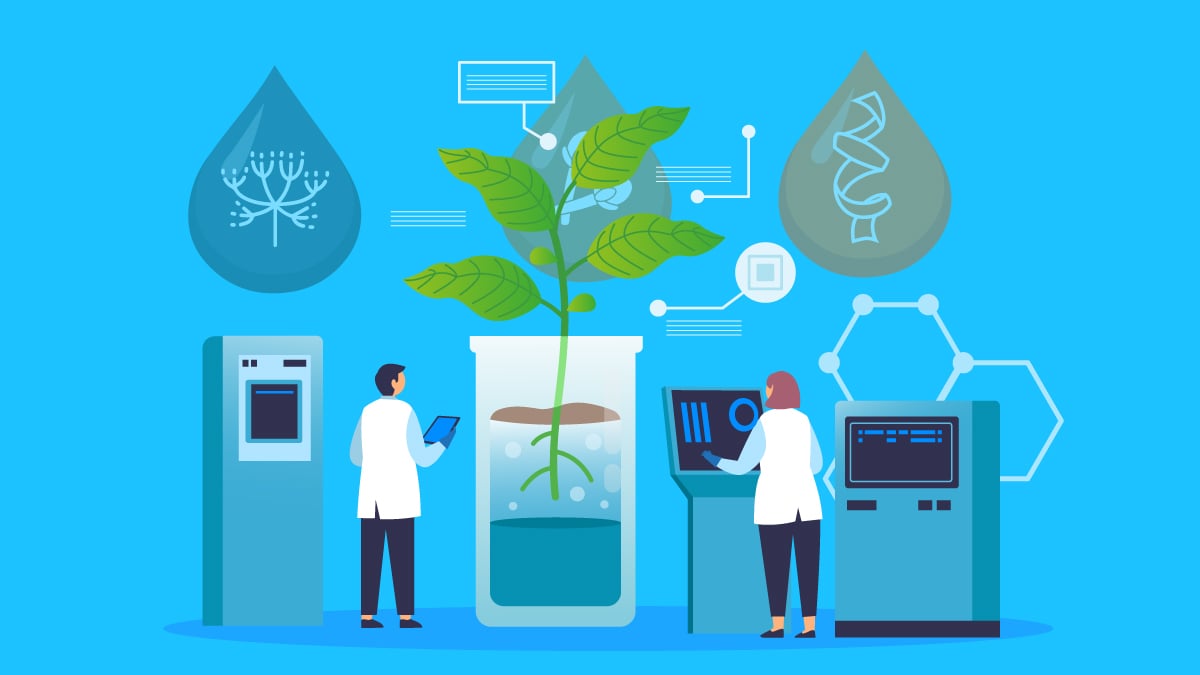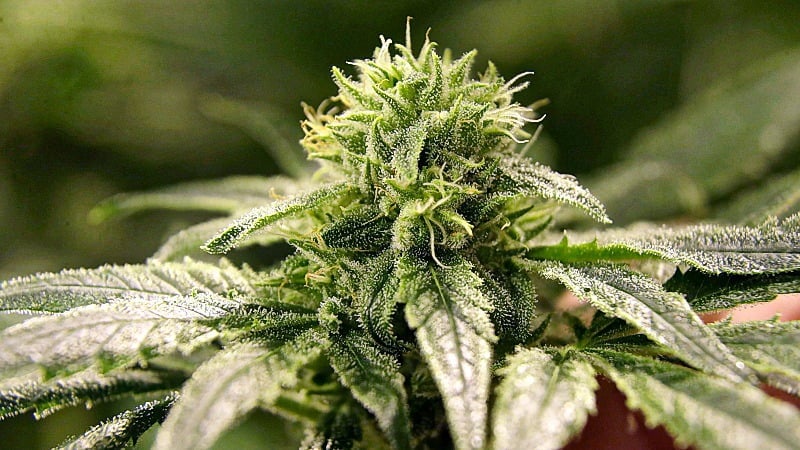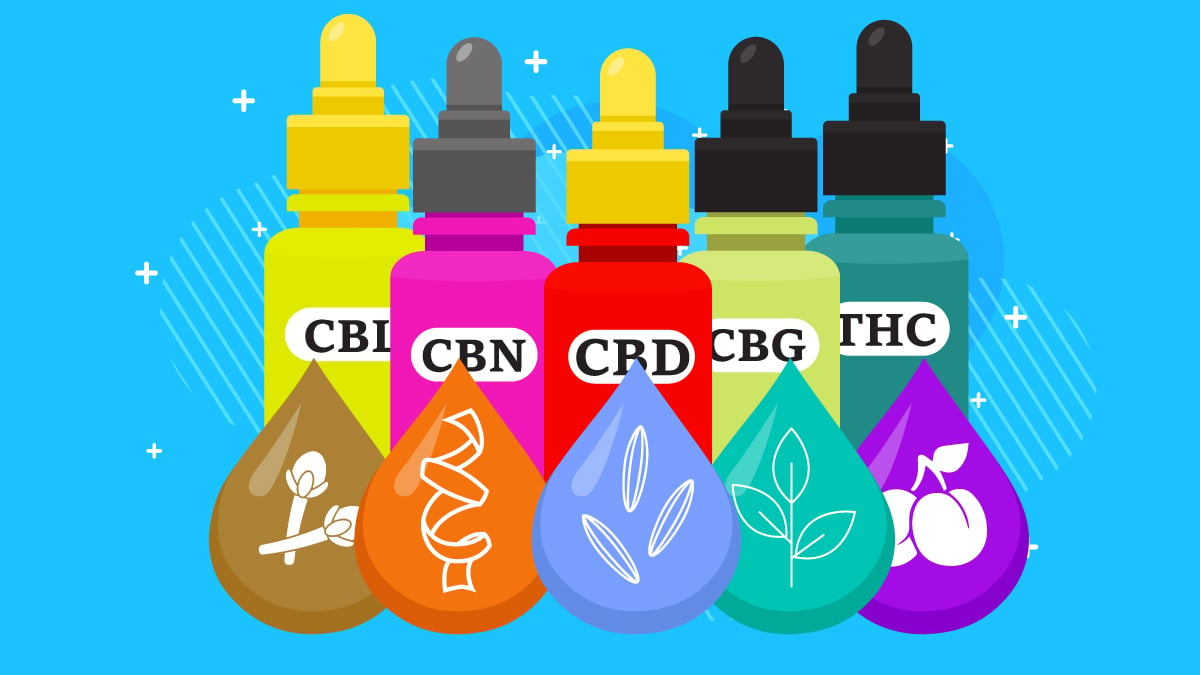What is The Role of Terpenes in Plants?

The plant kingdom produces over 30,000 terpenes. These naturally occurring compounds give the different plant species unique characteristics — from aroma and flavor to pigment and coloration.
Terpenes also play an integral role in the growth, survival, and propagation of plants.
This article discusses the importance of terpenes and the role they play in plants and the environment.
What Do Terpenes Do in Plants?
All plants naturally produce terpenes. These organic compounds give the different plant species their unique characteristic — from adding color and pigmentation to the leaves and flowers to providing a unique aroma.
Plants can use terpenes to both appeal to our senses, so we’re more likely to propagate them — and repel us, so we leave them alone.
Terpenes also serve an important function in the plant’s immune system. They protect the plants against their natural predators and, at the same time, attract pollinators.
Here are seven important roles terpenes play in plants:
1. Repel Predators
Plants have many predators. These can be insects, birds, and mammals. These herbivores not only feed on wood, fruit, and leaves but also on seeds and nectar.
To protect themselves, plants release compounds (including terpenes) that directly and indirectly repel these predators [1]. Some terpenes are even directly toxic to herbivores.
Some chemicals like methyl salicylate affect the predator’s reproductive system. This prevents insects from reproducing, thus blocking the infestation of certain insects and increasing the plant’s survival rate.
Other chemicals also attract beneficial insects. These “helpers” attack harmful pests and eat their eggs.
2. Attract Pollinators
Many plants like the kiwifruit vines, sunflower, lychee, sugar beet, etc., rely on bees and other pollinators for propagation.
The pollinators carry the pollen from the plant’s male part (anthers) to its female part or another flower (stigma). Pollination is triggered once the pollen attaches to the stigma, and fruits and seeds then develop from the fertilized flowers.
For pollination to take place, though, the plant’s flowers release terpenes to attract these pollinators.
For example, the petals lilac emits the terpene terpinolene — which is a strong bee attractant. The tree optimizes the release of terpenes by waiting for specific points in the day when bees are most active [2].
During the night, night pollinators like moths detect terpenes like linalool emitted by the flowers. The terpenes also attract other night pollinators such as bats, rodents, ants, cockroaches, and many others.
3. Defend Against Infection
Viruses, bacteria, and fungus can attack plants and prevent them from growing and reproducing normally. Left uncontrolled, the infection could overwhelm the plant’s immune system, resulting in its demise.
Plants have surface receptors that detect and recognize chemicals and molecules emitted by pathogenic and even non-pathogenic microorganisms. Once they detect the presence of microbes, the plant’s immune system responds to the threat [3].
Once the immune system is triggered, the plant releases many protein kinases, oxidases, and terpenes that attack these pathogenic microorganisms. Terpenes also send signals to neighboring plants, priming their immune system responses as well.
The compounds released by the plant weakens the microbe’s cell wall [4]. With its cell wall destroyed, the microbe will no longer function properly, resulting in its death.
Terpenes also prevent microbes from reproducing and proliferating by interrupting cell division.
4. Attract Natural Allies
Some insect pests lay eggs on the plant’s leaves. When these eggs develop into larvae, they’ll begin feeding on the leaves, affecting the plant’s ability to produce its food through photosynthesis.
Now, terpenes don’t just emit aroma and flavor to repel pests, but they also attract the natural enemies of their predators.
For example, elm leaf beetles eat the leaves of elm trees and lay their eggs on the leaves. This weakens the tree and makes it more vulnerable to pathogenic microorganisms and other pests.
The leaves release terpenes that attract egg parasitoids like the eulophid wasp [5]. The wasp then feeds on the eggs, helping the tree survive.
Terpenes also serve as a “reward” for the plant’s helpers and pollinators.
For example, cineol, a known insecticide, is collected and stored by male orchid bees in their hind leg pouches. They then release this terpene during their courtship with female orchid bees, helping them find their best mate.
Some female bees also collect terpenes like anyone and dammadienone and use them to help build their nests.
Plants build a symbiotic relationship with their helpers, where they both benefit from terpenes.
5. Protect From the Harsh Sun
Sunlight is necessary for a plant’s food production. The leaves trap light energy and use it in photosynthesis, converting water and carbon dioxide into oxygen and glucose.
However, too much sunlight is harmful to plants. The harsh sun can damage the leaves, prevent proper food production, and dehydrate the plants.
To protect the plant, some terpenes serve as their natural sunblock. Depending on their exposure to the sun, terpenes can either increase or decrease in concentration.
For example, the grapevine increases its production of linalool when exposed to too much sun. Linalool helps protect the grape’s tissues from the sun’s UV rays [6].
Some terpenes also absorb UV rays — sort of like a natural sunscreen. They also act as antioxidants that further protect the plant cells against the harmful effects of UV rays.
6. Seed Clouds & Increase Chances of Rain
You may not know this, but terpenes form a part of the important VOCs (volatile organic compounds) that trigger cloud seeding.
Trees emit terpenes and other compounds such as isoprene. Together with other aerosols (including air pollutants), these compounds evaporate into the air as gases known as the VOCs [7].
Due to cloud convection, these molecules are carried toward the upper atmosphere, reaching heights as high as 15,000 meters.
The temperature in the upper atmosphere is low at about -55-degrees Celsius. At this low temperature, condensation of the VOCs occurs. They clump together to form tiny water or ice droplets. The droplets continue to absorb more VOCs until they become even more saturated.
As the clumps continue to grow and group, they begin to form cloud seeds. The more cloud seeds form, the higher the chances of precipitation or rain.
When the large ice crystals or flakes break apart, they fall back to the ground. As they meet the warmer layers of the atmosphere, the ice crystals melt and become raindrops.
Trees and the organic chemicals they emit (including terpenes) play an important role in cloud seeding. They create natural cloud seeds and help reduce temperature rises across the globe.
7. Slow the Growth of Nearby Plants Fighting for Real Estate
If you’re not that familiar with plants, you probably won’t notice that some plants have a way of preventing nearby plants from growing or spreading too close to them.
Called allelopathy, some plants like the maple trees can slow down the growth of nearby plants by pulling more water from the ground. This deprives its neighboring plants of the nutrients they need, preventing them from thriving and flourishing.
Plants like the aromatic camphor laurel also release a camphor terpene, scattering it into the air and on the ground. This prevents the germination of other plants and inhibits the respiration of neighboring plants [8].
While allelopathy benefits the plant, it can also have a harmful and detrimental effect on its environment, affecting the productivity and biodiversity of the other plants.
The Role of Terpenes in the Cannabis Industry
Terpenes have long been used in many industries, especially the food, cosmetic, and aromatherapy industries.
These organic compounds are widely used as natural flavorings. They’re also used to create different perfumes or make cosmetics and skincare products more aromatic. Terpene oils are also added to massage oils, not only to provide an aromatic scent but also to lend their health benefits.
Of the many industries that use terpenes, though, the cannabis industry is probably the most innovative. These compounds, after all, give cannabis its distinctive flavors and aromas.
Manufacturers add natural terpenes into their products, so you’ll see oils, tinctures, capsules, edibles, topicals, vape oils, and even CBD-rich flowers infused with terpenes.
While terpenes enhance the product’s aroma and flavor, their effects also make the product stronger.
Terpenes are key players in the entourage effect. This phenomenon states that all the compounds found in cannabis (especially the cannabinoids and terpenes) work better together than alone. The compounds boost each other’s helpful effects, strengthening the product’s overall benefits.
This is one of the reasons why broad-spectrum and full-spectrum cannabis products offer more positive effects on your health than isolates.
Final Thoughts — Terpenes’ Integral Role in Plants
Terpenes play a major role in a plant’s growth, protection, and survival. They act as the plant’s natural defense against its predators and attract pollinators for their propagation.
Terpenes also help in cloud seeding. They’re much better at creating rain clouds than aerosol pollutants, and they also help reduce global warming.
These compounds are also important in many industries. They make the products more aromatic and flavorful, and they also have positive effects on our minds and body.
Are there terpenes in the products you use? What’s your favorite terpene? Let us know in the comment section below!
References:
- Boncan, D., Tsang, S., Li, C., Lee, I., Lam, H. M., Chan, T. F., & Hui, J. (2020). Terpenes and Terpenoids in Plants: Interactions with Environment and Insects. International journal of molecular sciences, 21(19), 7382.
- Nieuwenhuizen, N. J., Wang, M. Y., Matich, A. J., Green, S. A., Chen, X., Yauk, Y. K., Beuning, L. L., Nagegowda, D. A., Dudareva, N., & Atkinson, R. G. (2009). Two terpene synthases are responsible for the major sesquiterpenes emitted from the flowers of kiwifruit (Actinidia deliciosa). Journal of experimental botany, 60(11), 3203–3219.
- Jones, J. D., & Dangl, J. L. (2006). The plant immune system. Nature, 444(7117), 323–329.
- Guimarães, A. C., Meireles, L. M., Lemos, M. F., Guimarães, M., Endringer, D. C., Fronza, M., & Scherer, R. (2019). Antibacterial Activity of Terpenes and Terpenoids Present in Essential Oils. Molecules (Basel, Switzerland), 24(13), 2471.
- Büchel, K., Malskies, S., Mayer, M., Fenning, T.M., Gershenzon, J., Hiker, M., Meiners, T. 2011. How plants give early herbivore alert: Volatile terpenoids attract parasitoids to egg-infested elms. Basic Appl Ecol. 12:403-412
- Gil, M., Bottini, R., Berli, F., Pontin, M., Silva, M. F., & Piccoli, P. (2013). Volatile organic compounds characterized from grapevine (Vitis vinifera L. cv. Malbec) berries increase at pre-harvest and in response to UV-B radiation. Phytochemistry, 96, 148–157.
- Kirkby, J., Duplissy, J., Sengupta, K. et al. Ion-induced nucleation of pure biogenic particles. Nature 533, 521–526 (2016).
- Schenk, J. (2009). Phytochemistry, allelopathy, and the capability attributes of camphor laurel (Cinnamomum camphora (L.) Ness & Eberm.).


